Papers by Rozalia Bravina
Статья посвящена открытиям археологической экспедиции Института гуманитарных исследований и пробл... more Статья посвящена открытиям археологической экспедиции Института гуманитарных исследований и проблем малочисленных народов Севера СО РАН в период с 2011 по 2013 гг. За эти годы силами шести отрядов было открыто и предварительно обследовано 22 новых, а также 2 ранее выявленных археологических памятника различного хронологического диапазона (от мезолита до нового времени) в шести районах Республики Саха (Якутия).
Not infrequently religious objects that are found in shamanic attributes of Yakutia or are used i... more Not infrequently religious objects that are found in shamanic attributes of Yakutia or are used in ritual practice, are of Chinese origin. The problem of penetration of objects of Chinese culture in Yakutia has not been studied specifically. Historical and cultural ties with China can be traced with the Bronze Age to the late Middle Ages, which is confirmed by archaeological research Yakut graves XVII–XVIII centuries. Analysis of cult paraphernalia of Chinese origin shows that the Northern edge was not a simple consumer of imported items, not copied ready samples, and creatively comprehended them, filled with new religious and mythological content, adhering to their primordial traditions.
The article describes a bronze axe (celt) discovered in 2013 near Nyurba in the Republic of Sakha... more The article describes a bronze axe (celt) discovered in 2013 near Nyurba in the Republic of Sakha (Yakutia). Such artifacts are rarely found on the territory of Yakutia. The celt belongs to the type of earless axes and is decorated with lines, triangular festoons and eyelets. A similar axe had been found earlier in a ruined burial near the village of Mur'ya in Lensky district of Yakutia. Analogs of the Nyurba Celt are found on the territory of the forest and steppe zones of Krasnoyarsk region and belong to the Krasnoyarsk-Angarsk type. Such сelts as the Nyurba Celt are synchronized with the early stage of the Tagar culture and dated to the VII-VI centuries BC. Their penetration in Yakutia is associated with bearers of Tsepan’ culture of Northern Angara region dated to the Early Iron Age.
The article summarizes the results of the study of early Yakut burials of XIV-XVII centuries and ... more The article summarizes the results of the study of early Yakut burials of XIV-XVII centuries and identifies their basic features, including differences in burial structures, variety of placement of the corpses and types of accompanying grave goods, etc. The paper provides the first summary table of the age of medieval Yakut burials according to radiocarbon and dendrochronological dating methods.
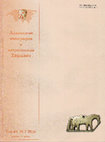
Атласовское погребение – один из самых ранних погребальных памятников кулун-атахской средневеково... more Атласовское погребение – один из самых ранних погребальных памятников кулун-атахской средневековой культуры якутов (XIV–XVI вв.). Первоначально его возраст был определен сравнительно-типологическим методом по сопроводительному инвентарю, а позже по данным радиоуглеродного датирования, согласно которым памятник относится к раннему этапу культуры (XIV–XV вв.). Захоронение отличается сидячим положением погребенного, что является практически уникальным случаем в традиционной погребальной практике якутов. Череп был полностью покрыт берестяной повязкой, под которой скрывались следы смертельных ранений. На основе всестороннего антропологического изучения находки предпринята попытка реконструировать образ жизни и причины смерти погребенного. Исследование костей скелета показало наличие нехарактерных для столь молодого возраста (20–25 лет) серьезных патологий, связанных с чрезмерными физическими нагрузками. Это свидетельствует в пользу неординарного социального положения, реконструируемого в двух крайних вариантах – раб или воин. Вместе с тем сложная берестяная повязка, наложенная на голову, косвенно указывает на достаточно высокий статус погребенного. Это вместе с необычным погребальным обрядом (в сидячем положении) позволяет достаточно уверенно говорить, что данный индивид, скорее всего, принадлежал к воинам. Множественные повреждения, нанесенные рубящим оружием, свидетельствуют об ожесточенности конфликтов в период становления этнической культуры якутов. Краниологическое исследование показало морфологическое сходство погребенного с антропологическим типом современных бурят и монголов, что перекликается с эпическими данными о происхождении якутов, в этногенезе которых принимали участие бурятские или монгольские переселенцы.
На основе анализа археологических материалов средневековых погребений якутов поднимаются проблемы... more На основе анализа археологических материалов средневековых погребений якутов поднимаются проблемы интерпретации могил со следами древнего постингумационного проникновения и ритуального нарушения погребальных конструкций и анатомической целостности костяков погребенных с привлечением этнографических и фольклорных данных. Дается обобщенная характеристика основных видов потревоженных захоронений позднего средневековья Якутии: вторичные погребения, бальзамирование, обезвреживание опасного умершего, осквернение, ограбление и т.д. Приводятся историко-сравнительные данные по древним и средневековым культурам Центральной Азии, Южной Сибири и Дальнего Востока. Рассматриваются мировоззренческие представления о загробном существовании, ритуальные действия якутов в отношении «опасных» мертвецов и сакральных лиц.
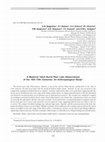
The burial near Lake Atlasovskoye, Yakutia, is one of the earliest Yakut burials, dating back to ... more The burial near Lake Atlasovskoye, Yakutia, is one of the earliest Yakut burials, dating back to the 14th or 15th centuries AD and associated with the medieval Kulun-Atakh culture. Initially, its age was assessed by the comparative typological method based on artifacts; and later radiocarbon dates were generated, suggesting that the burial can be attributed to the early stage of the Kulun-Atakh culture. Its highly unusual feature is that the individual was buried in a seated position, an exceptional case in Yakut funerary practice. The cranium was completely wrapped in a bandage sewn from birchbark sheets, under which lethal injuries were found. Our comprehensive study was aimed at assessing the individual's lifestyle and cause of death. Postcranial bones revealed pathological symptoms unusual for an early age (20–25 years) and caused by excessive physical strain, suggesting that the man was either a slave or a warrior. The complex birchbark bandage may indicate high status. Together with the seated position of the body, this makes the military status even more likely. Multiple traumatic lesions infl icted with a cutting weapon indicate the violent nature of confl icts at the early stage of the Yakut culture. Craniometric analysis reveals Buryat and Mongol affinities, supporting evidence from epic literature relating to Yakut origins, in which Buryat or Mongol immigrants had taken part.
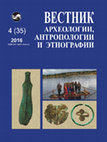
Комплексное исследование раннеякутского Сергеляхского погребения середины XV – начала XVI вв. / COMPREHENSIVE STUDY OF THE EARLY YAKUT SERGELYAKH BURIAL OF THE XV — BEGINNING OF THE XVI CENTURIES, Dec 12, 2016
The paper presents a comprehensive study of graves which relate to rare burial sites of the early... more The paper presents a comprehensive study of graves which relate to rare burial sites of the early stage of ethnic history of the Yakuts. The burial belongs to an equestrian warrior. It is confirmed by the findings of the horse harness and fragments of weapons, including a part of a Central Asian composite bow which is unique to the Yakuts, arrowheads and a blade of palma (Siberian pole weapon). The vertebral pathologies and morphological features of femurs also point at riding as a usual way of transportation. Multiple injuries of bones indicate to an aggressive lifestyle. The death of the man was caused by a penetrating injury of the head with a bladed weapon. Craniological characteristics of the man correspond to the South Siberian populations characterized by a combination of Caucasoid and Mongoloid features. In this case, the latter prevails. The ritual funerary complexes correspond to the Ust-Talkin culture, which alongside with cranial features of the man enable us to associate Sergelyakh burial with Turkic part of the Sakha people, which is epically correlated with the legendary Elley Bootur.

Китайские изделия в культовой атрибутике якутов
This paper describes and analyzes Chinese objects found in Yakutia, such as coins, bronze mirrors... more This paper describes and analyzes Chinese objects found in Yakutia, such as coins, bronze mirrors, bells, etc. In the vast majority of cases they are accidental finds by individuals and are not widely known to researchers. The goals of this paper are: the attribution of artifacts of Chinese origin, the identification of the place and time of their production, and possible pathways to Yakutia, understanding the ways and methods of their adaptation to the traditional culture of the Yakuts of 17th — beginning of 20th century. Taking as an example religious paraphernalia which have Chinese origins, the authors try to address the problem of cultural borrowings, which were carried out in the territory of Yakutia, in the context of the formation of local cultural traditions, as well as their subsequent simulation in the ritual practice of Yakuts.
Judging by the form, ornamental decor and semantics of Yakut metal discs (kün), the Yakuts have inherited in their culture ancient Chinese traditions, probably taken over by their ancestors long before the development of the Lena area. This is also confirmed by studies of the history of the origin of the Yakut choron ritual vessels, which are similar in shape to Chinese Bronze Age tripods known in the archaeological literature as li. The northern area was not merely a consumer of imported goods, and did not blindly copy ready-made models, but creatively reworked them, filling them with new religious and mythological content, according to their ancestral traditions. This can be well illustrated by the example of Chinese coins, the so-called dom coins, which were used in the magic-ritual actions of Yakut shamans.
The penetration of Chinese imported goods to Yakutia increased due to the opening of the fair at Nerchinsk (1689) and trade settlement at Kyakhta (1728), as is evidenced by the grave goods accompanying Yakut burials of the 18th century.
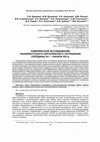
Представлены результаты комплексного исследования захоронения, относящегося к малочислен-ным погр... more Представлены результаты комплексного исследования захоронения, относящегося к малочислен-ным погребальным памятникам раннего этапа этнической истории якутов. Погребение принадлежит конному воину, о чем свидетельствуют элементы конной упряжи и фрагменты вооружения, в том чис-ле части уникального для якутов композитного лука центрально-азиатского типа, наконечники стрел, клинок пальмы. Патологии позвоночника и морфологические признаки бедренных костей также указы-вают на верховую езду как привычный способ передвижения. Многочисленные травмы на костях сви-детельствуют об агрессивном образе жизни. Смерть мужчины наступила в результате проникающе-го ранения головы, нанесенного клинковым оружием. Краниологические характеристики индивидуума находят соответствие в южно-сибирских популяциях, для которых характерно метисное сочетание европеоидных и монголоидных признаков, в рассматриваемом случае с преобладанием последних. Со-ответствие ритуальных признаков погребальным комплексам усть-талькинской культуры и кранио-логические особенности мужчины позволяют ассоциировать Сергеляхское погребение с «тюркской» составляющей народа саха, эпически соотносимой с легендарным Эллэй Боотуром. Ключевые слова: Сергеляхское погребение, усть-талькинская культура, якуты, кранио-метрия, череп, антропологический тип, палеопатология, популяция.
В сообщении приводятся данные об археологических разведках археологической экспедиции Института г... more В сообщении приводятся данные об археологических разведках археологической экспедиции Института гуманитарных исследований и проблем малочисленных народов Севера СО РАН, проведенных в полевой сезон 2014 г. на территориях городского округа «Город Якутск», Томпонского, Оймяконского, Вилюйского, Верхневилюйского, Нюрбинского, Сунтарского районов Республики Саха (Якутия). В ходе работ было открыто 6 погребений позднего средневековья и нового времени, 21 стоянка и поселение, датируемые от мезолита до позднего средневековья и нового времени, а также заново обследовано 17 стоянок и поселений этих же периодов.

Китайские изделия в культовой атрибутике якутов
This paper describes and analyzes Chinese objects found in Yakutia, such as coins, bronze mirrors... more This paper describes and analyzes Chinese objects found in Yakutia, such as coins, bronze mirrors, bells, etc. In the vast majority of cases they are accidental finds by individuals and are not widely known to researchers. The goals of this paper are: the attribution of artifacts of Chinese origin, the identification of the place and time of their production, and possible pathways to Yakutia, understanding the ways and methods of their adaptation to the traditional culture of the Yakuts of 17th — beginning of 20th century. Taking as an example religious paraphernalia which have Chinese origins, the authors try to address the problem of cultural borrowings, which were carried out in the territory of Yakutia, in the context of the formation of local cultural traditions, as well as their subsequent simulation in the ritual practice of Yakuts.
Judging by the form, ornamental decor and semantics of Yakut metal discs (kün), the Yakuts have inherited in their culture ancient Chinese traditions, probably taken over by their ancestors long before the development of the Lena area. This is also confirmed by studies of the history of the origin of the Yakut choron ritual vessels, which are similar in shape to Chinese Bronze Age tripods known in the archaeological literature as li. The northern area was not merely a consumer of imported goods, and did not blindly copy ready-made models, but creatively reworked them, filling them with new religious and mythological content, according to their ancestral traditions. This can be well illustrated by the example of Chinese coins, the so-called dom coins, which were used in the magic-ritual actions of Yakut shamans.
The penetration of Chinese imported goods to Yakutia increased due to the opening of the fair at Nerchinsk (1689) and trade settlement at Kyakhta (1728), as is evidenced by the grave goods accompanying Yakut burials of the 18th century.
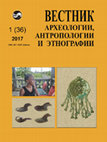
Женское погребение XVII века Атласовское-2 из Центральной Якутии: результаты комплексного исследования / The woman’s burial of Atlasovskoe-2 of the XVII century in Central Yakutia: results of a complex research, 2017
This article presents a complex study of the female burial of the XVII century in Central Yakutia... more This article presents a complex study of the female burial of the XVII century in Central Yakutia. The burial rite (traces of ritual roasting of the coffin, orientation to the North) and composition of the accompanying inventory (a knife of the non-Yakut origin, a sphero-conical top part of a headdress with a support for a plume, twin overlaid decorative details of the headdress’s crown, a composite pectoral panel picture of sewn-on patches, an earring in the form of a question mark with a biconical bead) determine the peculiarity of the burial, and their nearest parallels can be traced to the Medieval cultures of the Eurasian steppe and forest-steppe nomads, as well as to the population of the Siberian forest and tundra zones of the XVI–XIX centuries. Craniological characteristics of the buried woman draw her closer to the populations of Central Asian and Baikal anthropological types of the North Asian formation.
The Kulun-Atakh archeological culture of the Sakha [Yakut] people is described on the basis of bu... more The Kulun-Atakh archeological culture of the Sakha [Yakut] people is described on the basis of burials dated to the fourteenth through sixteenth centuries. This is a period before the arrival of Cossacks, when the Sakha were first practicing livestock herding in the vast territories of what is today the Sakha Republic (Yakutia). Recent dating techniques combined with new discoveries have made possible multidisciplinary research on Sakha origins.
The article examines burials in a flexed position among the Late Middle Age population of Central... more The article examines burials in a flexed position among the Late Middle Age population of Central Yakutia. We provide information on the general features and dating of the burials, medical and anatomical descriptions of the corpse placement, as well as available ethnographic and folklore evidences. The comparison of various historical and cultural parallels makes it possible to argue that in the Middle Age archaeological cultures of the Baikal area, there are burials that are analogous to the flexed position burials of the Yakut. The data obtained as a result of this research make important contributions to our knowledge of the early ethnic history of the Yakut.
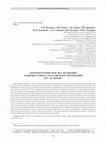
Атласовское погребение – один из самых ранних погребальных памятников кулун-атахской средневеково... more Атласовское погребение – один из самых ранних погребальных памятников кулун-атахской средневековой культуры якутов (XIV–XVI вв.). Первоначально его возраст был определен сравнительно-типологическим методом по сопроводительному инвентарю, а позже уточнен по данным радиоуглеродного датирования, согласно которым памятник относится к ран-нему этапу культуры (XIV–XV вв.). Захоронение отличается сидячим положением погребенного, что является практически уникальным случаем в традиционной погребальной практике якутов. Череп был полностью покрыт берестяной повязкой, под которой скрывались следы смертельных ранений. На основе всестороннего антропологического изучения находки предпринята попытка реконструировать образ жизни и причины смерти погребенного. Исследование костей скелета по-казало наличие нехарактерных для столь молодого возраста (20–25 лет) серьезных патологий, связанных с чрезмерными физическими нагрузками. Это свидетельствует в пользу неординарного социального положения, реконструируемого в двух крайних вариантах – раб или воин. Вместе с тем сложная берестяная повязка, наложенная на голову, косвенно указывает на достаточно высокий статус погребенного. Это вместе с необычным погребальным обрядом (в сидячем положении) позволяет уверенно говорить, что данный индивид, скорее всего, принадлежал к воинам. Множественные повреждения, нанесенные рубящим оружием, свидетельствуют об ожесточенности конфликтов в период становления этнической культуры якутов. Краниологическое исследование показало морфологическое сходство погребенного с антропологическим типом современных бурят и монголов, что перекликается с эпическими данными о происхождении якутов, в этногенезе которых принимали участие бурятские или монгольские переселенцы. Ключевые слова: Атласовское погребение, кулун-атахская культура, якуты, череп, разрубы, антропологический тип, палеопатология.
Books by Rozalia Bravina
Исследования проводились в рамках французских археологических миссий в Восточной Сибири при Минис... more Исследования проводились в рамках французских археологических миссий в Восточной Сибири при Министерстве иностранных дел Франции совместно с Якутским государственным университетом, при поддержке Национального Центра Научных Исследований, Университета имени Поля Сабатье (Тулуза III), Института судебной медицины г. Страсбурга, Колледжа Франции, кинокомпании Жедеон Программ и Полярного Института им.Поля-Эмиля Виктора; в части лабораторных исследований – лабораториями ACI – «Пространственный комплекс Алтай-Байкал» и ANR «Генетическое разнообразие современных народов и история заселения Восточной Сибири». Авторы выражают благодарность всем вышеперечисленным учреждениям.






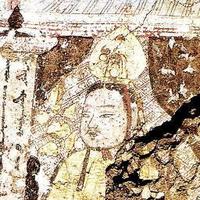




Uploads
Papers by Rozalia Bravina
Judging by the form, ornamental decor and semantics of Yakut metal discs (kün), the Yakuts have inherited in their culture ancient Chinese traditions, probably taken over by their ancestors long before the development of the Lena area. This is also confirmed by studies of the history of the origin of the Yakut choron ritual vessels, which are similar in shape to Chinese Bronze Age tripods known in the archaeological literature as li. The northern area was not merely a consumer of imported goods, and did not blindly copy ready-made models, but creatively reworked them, filling them with new religious and mythological content, according to their ancestral traditions. This can be well illustrated by the example of Chinese coins, the so-called dom coins, which were used in the magic-ritual actions of Yakut shamans.
The penetration of Chinese imported goods to Yakutia increased due to the opening of the fair at Nerchinsk (1689) and trade settlement at Kyakhta (1728), as is evidenced by the grave goods accompanying Yakut burials of the 18th century.
Judging by the form, ornamental decor and semantics of Yakut metal discs (kün), the Yakuts have inherited in their culture ancient Chinese traditions, probably taken over by their ancestors long before the development of the Lena area. This is also confirmed by studies of the history of the origin of the Yakut choron ritual vessels, which are similar in shape to Chinese Bronze Age tripods known in the archaeological literature as li. The northern area was not merely a consumer of imported goods, and did not blindly copy ready-made models, but creatively reworked them, filling them with new religious and mythological content, according to their ancestral traditions. This can be well illustrated by the example of Chinese coins, the so-called dom coins, which were used in the magic-ritual actions of Yakut shamans.
The penetration of Chinese imported goods to Yakutia increased due to the opening of the fair at Nerchinsk (1689) and trade settlement at Kyakhta (1728), as is evidenced by the grave goods accompanying Yakut burials of the 18th century.
Books by Rozalia Bravina
Judging by the form, ornamental decor and semantics of Yakut metal discs (kün), the Yakuts have inherited in their culture ancient Chinese traditions, probably taken over by their ancestors long before the development of the Lena area. This is also confirmed by studies of the history of the origin of the Yakut choron ritual vessels, which are similar in shape to Chinese Bronze Age tripods known in the archaeological literature as li. The northern area was not merely a consumer of imported goods, and did not blindly copy ready-made models, but creatively reworked them, filling them with new religious and mythological content, according to their ancestral traditions. This can be well illustrated by the example of Chinese coins, the so-called dom coins, which were used in the magic-ritual actions of Yakut shamans.
The penetration of Chinese imported goods to Yakutia increased due to the opening of the fair at Nerchinsk (1689) and trade settlement at Kyakhta (1728), as is evidenced by the grave goods accompanying Yakut burials of the 18th century.
Judging by the form, ornamental decor and semantics of Yakut metal discs (kün), the Yakuts have inherited in their culture ancient Chinese traditions, probably taken over by their ancestors long before the development of the Lena area. This is also confirmed by studies of the history of the origin of the Yakut choron ritual vessels, which are similar in shape to Chinese Bronze Age tripods known in the archaeological literature as li. The northern area was not merely a consumer of imported goods, and did not blindly copy ready-made models, but creatively reworked them, filling them with new religious and mythological content, according to their ancestral traditions. This can be well illustrated by the example of Chinese coins, the so-called dom coins, which were used in the magic-ritual actions of Yakut shamans.
The penetration of Chinese imported goods to Yakutia increased due to the opening of the fair at Nerchinsk (1689) and trade settlement at Kyakhta (1728), as is evidenced by the grave goods accompanying Yakut burials of the 18th century.